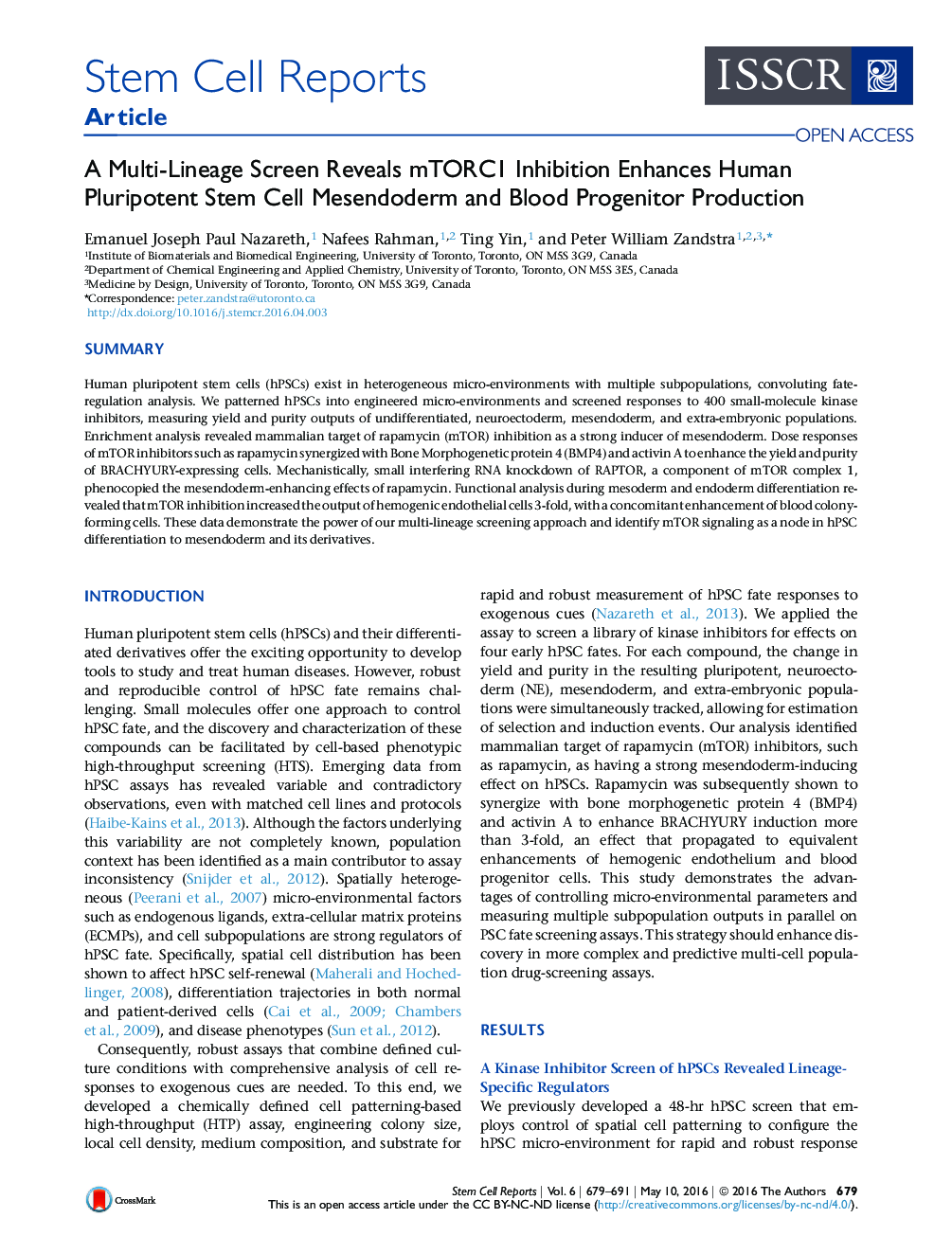| Article ID | Journal | Published Year | Pages | File Type |
|---|---|---|---|---|
| 2093227 | Stem Cell Reports | 2016 | 13 Pages |
•Cell patterning enables quantitative yield and frequency analysis of hPSC fate•A kinase inhibitor library is used to identify key PSC differentiation pathways•mTOR inhibition enhances mesendoderm, hemogenic endothelium, and blood progenitors•siRNA knockdown of RAPTOR, an mTORC1 component, phenocopies mTOR inhibition
SummaryHuman pluripotent stem cells (hPSCs) exist in heterogeneous micro-environments with multiple subpopulations, convoluting fate-regulation analysis. We patterned hPSCs into engineered micro-environments and screened responses to 400 small-molecule kinase inhibitors, measuring yield and purity outputs of undifferentiated, neuroectoderm, mesendoderm, and extra-embryonic populations. Enrichment analysis revealed mammalian target of rapamycin (mTOR) inhibition as a strong inducer of mesendoderm. Dose responses of mTOR inhibitors such as rapamycin synergized with Bone Morphogenetic protein 4 (BMP4) and activin A to enhance the yield and purity of BRACHYURY-expressing cells. Mechanistically, small interfering RNA knockdown of RAPTOR, a component of mTOR complex 1, phenocopied the mesendoderm-enhancing effects of rapamycin. Functional analysis during mesoderm and endoderm differentiation revealed that mTOR inhibition increased the output of hemogenic endothelial cells 3-fold, with a concomitant enhancement of blood colony-forming cells. These data demonstrate the power of our multi-lineage screening approach and identify mTOR signaling as a node in hPSC differentiation to mesendoderm and its derivatives.
Graphical AbstractFigure optionsDownload full-size imageDownload as PowerPoint slide
